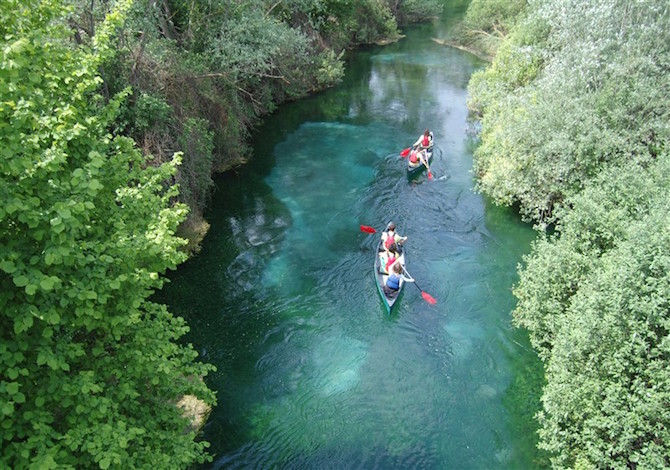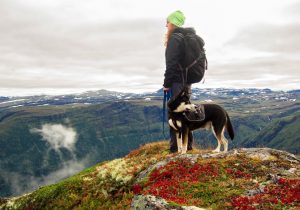There are 7 places in Italy far from the chaos and in the wild nature where to have a good adventure, a trekking thrilling,
You don’t need to have Reinhold Messner’s preparation to take a slightly adventurous holiday in the middle of nature, move our body like we don’t do during the rest of the year and feel a bit like an explorer.
Anyone can do it (and we know what the benefits of a trip are), provided they choose the right destinations and the most suitable itineraries.
7 places in Italy far from the chaos and in the wild nature
To choose the most suitable destinations for a nice holiday in Italy that makes us feel a bit like children and a bit like adventurers, we thought of 4 main criteria: nature, movement, exploration, emotions.
All in places with low density of human beings, which is not very easy to achieve in Italy.
After searching, we selected 7 places that respond to these characteristics.
Sooner or later in life it is worth reaching all of them.
1. Tirino River, Abruzzo
The clearest river in Europe is in Abruzzo, it is 25 km long and if you go canoeing it you will probably never forget it again. The Tirino is a hidden pearl of Italy that winds its way between the provinces of breaking latest news and L’Aquila. It has the peculiarity of a karst nature and three pristine springs and resurgences, which keep the water always clean (in addition to the lack of traffic and pollution in the surroundings).
A holiday here, combined with others in the wild parks of the region, is a panacea for body and spirit. Excursions can be made along the course of the Tirino on foot and by mountain bike suitable for families with children, you can take a tour of the Wolf Visitor Center, and above all you can navigate on the transparent waters together with environmental guides (starting from Capestrano), dive in for a swim, drink the river water directly and let yourself be carried away by the current in absolute silence: those who have done it say that it is an incredible experience.
2. Via Postumia, Northern Italy
Traced by a group of passionate trekkers (we talked about it in an in-depth article), the Via Postumia is considered the Italian part of the Camino de Santiago. It starts from Aquileia and crosses all of Northern Italy up to Genoa and connects to the famous Camino continuing up to the border section with France which then continues in Provence and hooks up with the main road in Roncesvalles.
It is a long journey (just under a thousand km) and very varied, that touches cities of art (Treviso-Vicenza-Verona-Mantua-Genoa and others) and historic villages scattered along the route. And you walk through forests and plains that have so far remained outside the classic paths e for this reason almost untouched.
An adventure not necessarily extreme but for those who have ggreat curiosity and a true explorer’s spirit.
3. Selvaggio Blu Trail, Sardinia
The Sentiero Selvaggio Blu is one of the most spectacular hiking trails in Italy: it winds for almost 50km in the Sardinian Supramonte, along the gulf of Orosei. It was opened in the 1980s by two mountaineers in love with wild places and it’s not really for everyone: it includes some climbing and rappelling sections and has no real support points other than those guaranteed by the services of some organizations locals.
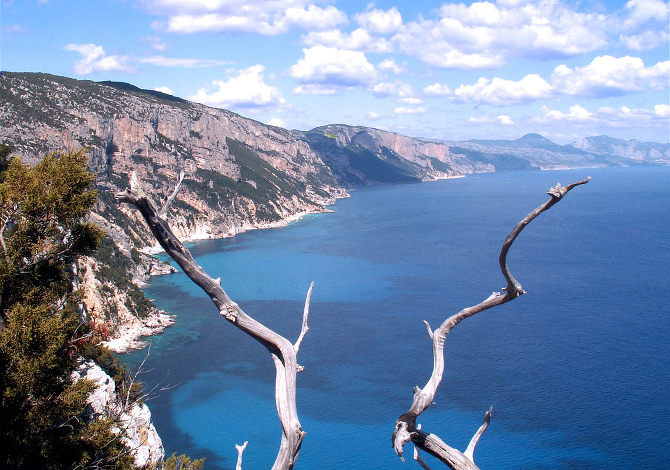
For this reason, a trip to these parts is a real outdoor adventure where you meet few people and where you can live exciting experiences, such as admiring some of the most beautiful beaches in the Mediterranean (Cala Luna, Cala Sisine or Cala Goloritzé) and cross territories made up of cliffs, caves, Mediterranean scrub and difficult passages.
We talked more about it here: the path is organized in 7 stages, as the most important guide to the Sentiero Selvaggio Blu suggests: Wild Blue’s map, by Mario Verin and Giulia Castelli but for experienced hikers nothing prevents you from linking some stages together.
4. Alpe Aria Trail, Friuli Venezia Giulia
Ok, it’s not all in Italy because it winds through Austria, Slovenia and Friuli Venezia Giulia. And, ok, maybe it won’t be the loneliest itinerary of the summer but this year there’s a reason as big as a house to take a ride on the Alpe Adria path: the last unmissable celebrations of the First World War.
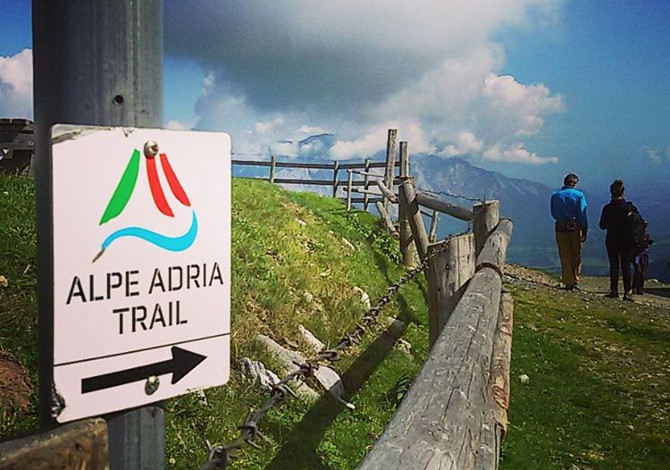
We have told about it in various articles: it is one of the longest trails in Europe (about 750 km from the Großglockner, the highest mountain in Austria, to the beach of Muggia on the Adriatic Sea). But it is also one of the easiest, suitable for everyone, with sections designed not to go beyond 6 hours of walking (there are 43 stages of a maximum of 20 km each), contained height differences and frequent refreshment and overnight stops.
Each stage can also be a complete naturalistic experience in a real Garden of Eden, with the meeting of magical places and landscape pearls in which to enjoy nature with every sense, from the glaciers of the Austrian mountains to the lakes, woods and rivers of Slovenia up to the variety of Friuli, between the mountains and the sea.
5. Maritime Alps Park, Piedmont
virgin forests, powerful nature and the wolf which has returned to populate these lands, as we have told in an article.
The Alpi Marittime Park in the province of Cuneo joins the Mercantour Park across the French border in a single large wild space where you can walk away from it all.

It starts from Entracque where there is also the Men and Wolves Wildlife Center, and you go along it 10 stages of the so-called Trekking del Lupo, among lakes, bivouacs, waterfalls, chamois. The guide talks about it The Wolf Trekking for Adults and Children by Franco Voglino and Annalisa Porporatowith detailed maps, route description and addresses for overnight stays, is on sale for 13.50 euros.
One more reason to go there now: Italy has nominated the Maritime Alps of the Mediterranean to enter the Unesco Heritage in 2019. This, in addition to confirming the exceptional nature of the place, means that the Park should succeed it could get much, much busier and it is not said that it will still be possible to tour it without meeting too many people.
6. Magna Via Francigena, Sicily
Like the Via Postumia, here too a group of enthusiasts got involved who reconstructed the ancient routes of pilgrims in Sicily and traced a path that is truly out of the ordinary and off the beaten track in the region. We talked about it in an in-depth article: in essence, some pilgrims who departed from Canterbury and arrived in Rome, continued towards Jerusalem passing through here, but in reality this is a very ancient system of paths, already used by Greeks, Romans, Byzantines, Arabs and Normans.
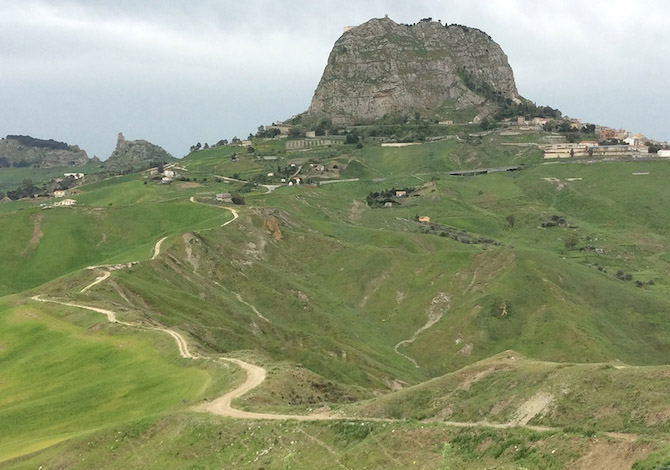
The road network of the Magna Via Francigena has the main path between Palermo and Agrigento (160 km), but many branches that lead the network of narrow streets to over 900 km between mountains (Madonie and Nebrodi), sea (Mazara del Vallo, Marsala, Syracuse). Nature, traditions, Mediterranean hospitality and good food are the characteristics of these paths that are still little known and for this reason still a lot to discover.
7. Alta Via dei Parchi, Emilia Romagna and Tuscany
The Apennines are full of mystery, suggestions and remote places. There is a journey of 500 km which goes from Berceto (Parma) to the cliff of Verna (Forlì Cesena) and then closes at the hermitage of Monte Carpegna (Rimini): it is the Alta Via dei Parchi.
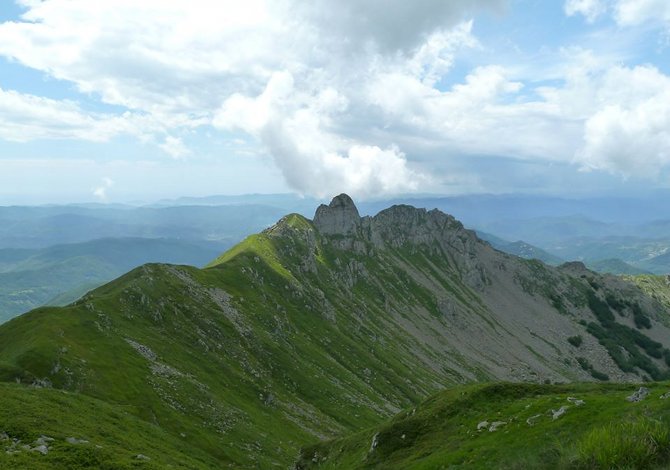
The route touches two regions in 27 stages (we talk about it in more detail here) and enters the Casentino forests among glacial cirques, lakes and high-altitude meadows, forests and streams, volcanic cliffs and chalk cliffs. There are 8 parks along the Viatwo of which are national (Tuscan-Emilian Apennines and Foreste Casentinesi, Monte Falterona and Campigna), in the heart of the wildest Apennines.
Those in better shape can continue on to the Ligurian Mountains thanks to the Cisa Pass, or on the Via Francigena in Berceto (here you can find all the articles on the Via Francigena) or even the Via Romea Peregrinorum at the Serra Pass.
There is a detailed guide which indicates refreshment points, bivouacs, means of transport and all the stages in detail
Advertising
